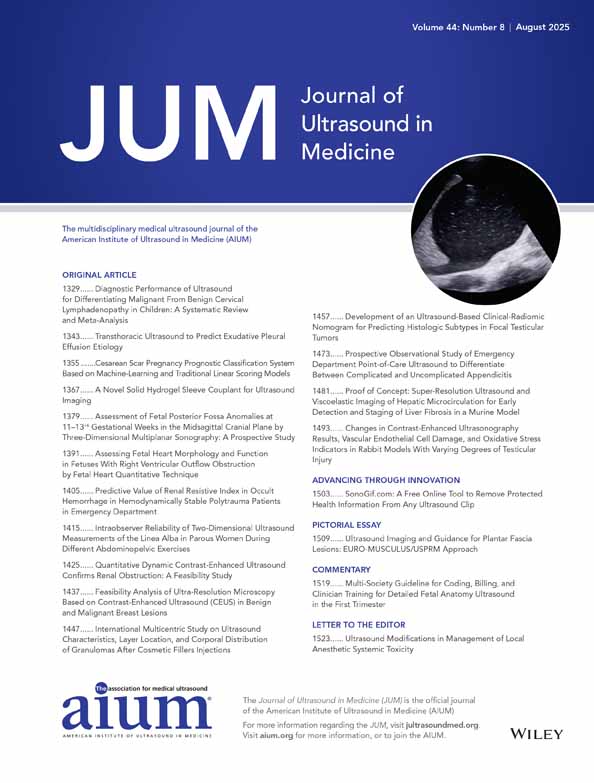Assessing Fetal Heart Morphology and Function in Fetuses With Right Ventricular Outflow Obstruction by Fetal Heart Quantitative Technique
The authors would like to thank the medical staff of the Department of Ultrasound, Shaw Hospital, Zhejiang University School of Medicine, for performing the cardiac ultrasound data collection. The authors also thank the pregnant women who came to the clinic for their trust in the hospital and this study. This work was supported by the foundation of Zhejiang Provincial Education Department (No. Y202248779). The authors declare that they have no competing interests.
Abstract
Objectives
To investigate the clinical utility of the fetal heart quantification (Fetal HQ) technique in the assessment of morphological and functional changes in fetuses with right ventricular outflow obstruction (RVOTO).
Methods
This study included 53 fetuses with RVOTO and 30 age-matched normal controls. The RVOTO fetuses were divided into 2 groups based on the occurrence of other cardiovascular malformations: the simple pulmonary stenosis (PS group) and the conotruncal defects (CTD group). Size, shape, and contractility parameters of the fetal heart in 4-chamber view (4CV), left ventricle, and right ventricle (LV and RV) detected by fetal HQ.
Results
Fetuses with RVOTO exhibited an increased 4CV-width, with normal 4CV-Length. The end-diastolic diameter (ED) of the LV segments 1–22 was significantly greater in RVOTO fetuses. The sphericity index (SI) of the LV 24-segment was significantly smaller in the CTD and PS groups. Global longitudinal strain (GLS) and fractional area change (FAC) of the LV and RV were reduced in RVOTO fetuses.
Conclusion
Our results suggested that the characteristic changes in the morphology and function of the RVOTO fetal heart could be detected early by the HQ technique, which has clinical utility in analyzing the morphology of the RVOTO fetal heart in a quantitative manner.
Open Research
Data Availability Statement
The data that support the findings of this study are available on request from the corresponding author. The data are not publicly available due to privacy or ethical restrictions.




